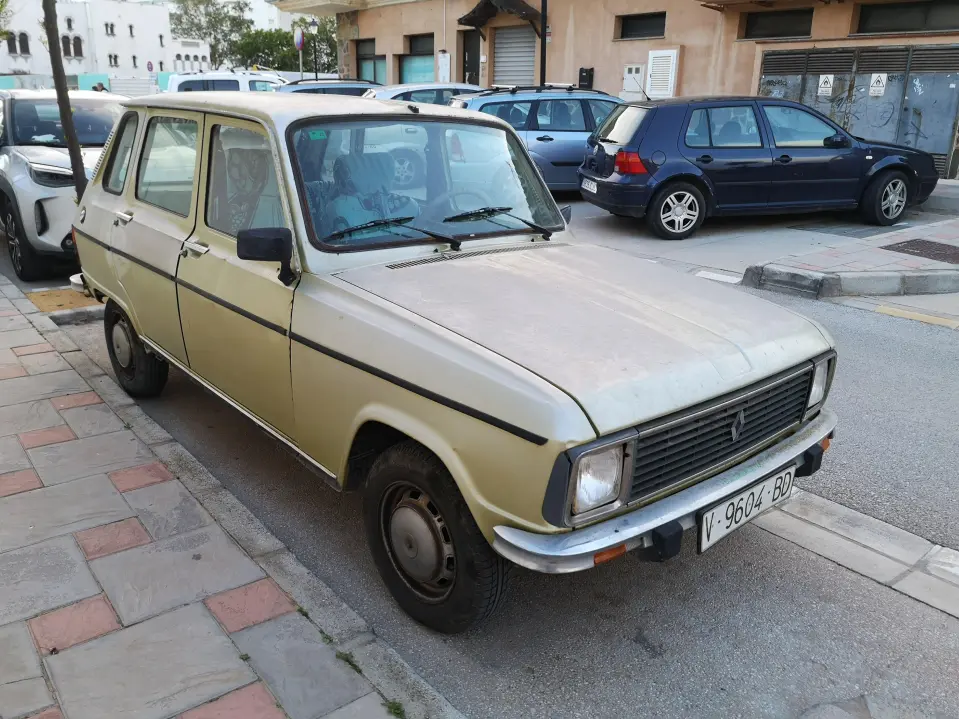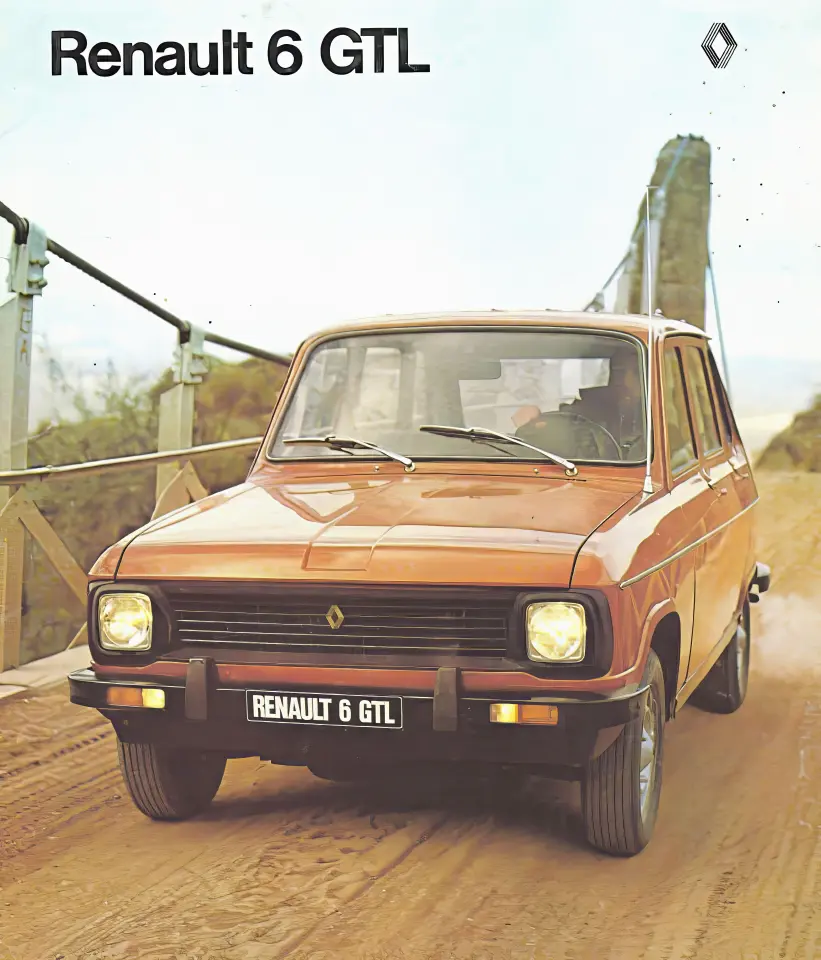Introduction
Once a beloved fixture on Britain’s roads, the Renault 6 TL now teeters on the brink of extinction. The French hatchback, known in the 1970s for its comfort, modest luxuries, and affordability, has dwindled to just two roadworthy models left in the entire country. This remarkable decline marks the Renault 6 TL as one of the rarest vehicles in Britain today—a symbol of a bygone era when practicality and charm trumped sleek lines and horsepower.
The Birth of the Renault 6 TL
Renault’s Strategic Market Response
The Renault 6 was introduced at the 1968 Paris Motor Show as a strategic response to the growing popularity of small family cars. Renault wanted to offer something more refined than the utilitarian Renault 4 but not as costly as the flagship Renault 16. Thus, the Renault 6 was born—built on the Renault 4 chassis but featuring a roomier body, more stylish design, and additional creature comforts.
The TL Upgrade
In 1970, Renault introduced the TL (Tourisme Luxe) version, giving the model a serious upgrade. The Renault 6 TL came with a 1.1-litre engine, front disc brakes, reclining seats, a heated rear window, and childproof locks. These features positioned it as an affordable yet slightly more upscale option for families and middle-income drivers. It balanced function with flair—an ideal second car or a reliable primary vehicle for city dwellers and countryside drivers alike.
A Family-Focused Design
The five-door configuration, ample boot space, and dashboard-mounted gear lever made the TL practical for family life. The flat floor design meant it was easier to load and unload children or groceries, and the generous glass areas allowed for excellent visibility. It wasn’t flashy, but it was user-friendly and unpretentious—exactly what many buyers were looking for.
Popularity in the UK Market
A Sensible Option for Budget Drivers
When the Renault 6 TL hit British roads in 1969, it offered a unique blend of comfort and economy. Priced at just over £1,000 in the mid-1970s, it was slightly more expensive than rivals like the Citroën Dyane or Austin Allegro, but it made up for the price difference with better interior features and improved ride quality.
The 1.1-litre engine offered sufficient power for everyday use, while fuel economy and reliability made it a practical choice for the post-war generation. Whether navigating tight urban roads or taking weekend trips to the countryside, the TL was a dependable partner.
The Oil Crisis Boost
The 1973 oil crisis created an immediate demand for fuel-efficient vehicles. Renault’s small cars, with their frugal engines and lightweight bodies, became more attractive than ever. The TL was particularly well-suited to the crisis era: efficient, practical, and comfortable, it ticked all the right boxes for drivers watching their petrol budgets.
A Reputation for Character
Motoring journalists in the 1970s appreciated the Renault 6 TL for its distinct character. It had charm, a smooth ride, and a certain continental flair without being showy. It stood out in a sea of boxy British saloons with its rounded lines and smart-looking interior. Owners often fondly remember its personality—quirky, loyal, and full of life.
The Slow Disappearance
End of Production
Production of the Renault 6 ended in France in 1980, with the final models rolling out of Spanish factories until 1986. More than 1.7 million units were built during its production run, but even that impressive figure couldn’t save it from the ravages of time and technology.
By the mid-1980s, car buyers were turning to more modern, performance-oriented hatchbacks. Manufacturers were racing toward innovation, and older models like the 6 TL were quickly left behind.
The Erosion of Everyday Classics
Like many workhorses of its time, the Renault 6 TL wasn’t built to become a collectible. It was a tool, a machine for daily life. As the years passed, rust, wear, and increasingly strict MOT requirements led to the quiet disappearance of these cars. Scrapped or simply left to deteriorate in barns and driveways, the Renault 6 TL faded from memory.
Only Two Left
Survivors of a Lost Generation
Fast-forward to today, and only two roadworthy Renault 6 TLs remain in the UK. This astonishing fact solidifies its place as perhaps the rarest mainstream car in Britain. For many, it’s hard to believe that a car once so common could become almost extinct in just a few decades.
These surviving examples now stand as testaments to an era of motoring that prioritized function over form, comfort over speed, and value over vanity.
The Story of Terence Byrne and ‘JEN 74’
One of the last remaining TLs belongs to Terence Byrne from County Down, Northern Ireland. His 1974 model is more than just a vehicle—it’s a tribute to his late wife, Jennifer, who had adored the Renault 6 during their early years together. In her memory, Terence lovingly named the car ‘JEN 74’.
The vehicle had originally replaced his Ford Escort Mk1 in the 1980s and proved just as capable navigating country tracks and muddy fields. Years later, after reconnecting with the Renault Classic Car Club, Terence searched tirelessly until he found another Renault 6 TL in Wimborne, Dorset. He made the trip, secured the car, and brought it home—giving it a new life as a rolling tribute to love, resilience, and history.
Today, JEN 74 turns heads at vintage car shows. With its pastel green paint and original chrome accents, it captivates both curious onlookers and nostalgic enthusiasts alike.
A Symbol of Forgotten Values
More Than Just a Car
The Renault 6 TL may be rare, but its legacy is rich. It reminds us of a time when cars were less about status and more about service. Before in-car Wi-Fi and LED headlights, before turbocharged engines and touchscreen dashboards, there were cars like the TL: simple, honest, and kind of endearing.
It offered everything most drivers actually needed—space, efficiency, dependability—without unnecessary complexity. And that’s what makes its near-extinction feel so significant. We’ve moved on from these values in many ways, but perhaps there’s still a lesson to be learned from the humble Renault 6 TL.
A Collector’s Underdog
Despite its rarity, the TL hasn’t achieved the collector status of a Jaguar E-Type or a Ford Capri. Its appeal lies in sentiment, not prestige. It’s not the kind of car that wins concours events, but it wins hearts—especially among those who grew up with one in the driveway or remember learning to drive in one.
Still, as its numbers dwindle, its appeal to classic car collectors is slowly growing. Those who understand its story know that it represents more than metal and rubber. It’s a living artifact from a different automotive age.
Why the Renault 6 TL Matters
An Underrated Chapter in Motoring History
While the Renault 4 enjoys recognition for revolutionizing practical hatchback design and the Renault 16 is praised for its innovation, the Renault 6 TL often falls through the cracks. Yet it played a vital role in Renault’s lineup—and in many British households.
It gave families access to comfort at a reasonable price, challenged the idea that budget had to mean basic, and showed that practicality could be stylish in its own understated way.
A Touchstone for Car Enthusiasts
For classic car lovers, especially those interested in forgotten gems, the Renault 6 TL offers a fascinating case study. Its design, market positioning, and features offer insight into how manufacturers approached the budget segment in the 1970s. For younger enthusiasts, it’s a time capsule on wheels.
JEN 74 and its twin survivor now carry the torch for all the Renault 6s that came before—each representing a lineage of thoughtful engineering, democratic design, and a different kind of driving experience.
Conclusion
The Renault 6 TL’s transformation from a popular budget hatchback to Britain’s rarest road car is a remarkable story of change in taste, technology, and transportation. More than just a nostalgic footnote, it’s a reminder of what cars used to mean: not power, not prestige, but practicality and personality.
As modern vehicles become increasingly complex and homogeneous, the rare appearance of a Renault 6 TL like JEN 74 feels like a breath of fresh air—a quiet statement that, sometimes, the most meaningful journeys are made in the simplest of cars.
For now, only two of these charming hatchbacks remain on UK roads. With a little luck, passion, and preservation, perhaps future generations will get to experience the humble brilliance of the Renault 6 TL—and remember an era when cars were built to serve, not to show off.






